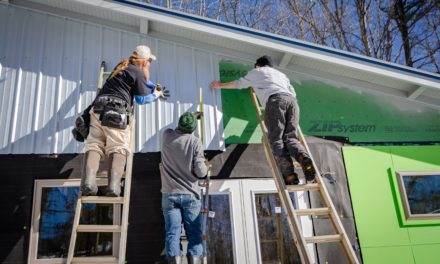My first car was a 1969 Volkswagen Microbus – yep, a hippie van. My parents offered to purchase me a car as a way to soften the blow of moving me out of state right in the middle of high school. 600 miles and $1200 later, I had a car, a toolbox, and an unexpected “project.” Car repair quickly became a survival skill for me. No car meant no life and certainly… no dates.
Dealing with a 1969 air-cooled four cylinder engine was quite easy in retrospect. No cooling system, no fancy electronics, no emissions concerns – all in exchange for no power. But, hey, it ran. I could work on it most of the time (which was a lot) and I learned a lot about the basics of vehicle maintenance and repair. Fast forward an unspecified number of decades and things are no longer easy. Time is much more limited, cars are much more complicated, and in some cases you need very specialized tools or skills just to figure out how to get to an error code much less understand what code # 84AC3DPMF$WTF? actually means. So does this mean DIY auto maintenance and repair is a thing of the past? Not necessarily. Here’s my personal take on the topic.
- Don’t change your own oil (or most other fluids). What? Yep, that’s right. To me, it’s just no longer worth it. Go to the store, buy the oil and filter, jack up the car, drain it into a pan, replace the oil and filter, and then drive back to the store to have the oil disposed of properly (you better being doing this if you still perform your own oil changes). That’s probably at least two hours of your time or a lot more if the oil filter is tucked away as though the engineers have some sort of vendetta against mechanics. Unless you find changing oil therapeutic, find a reputable shop that doesn’t over charge or better yet, find a shop that will let you bring in your own oil and filter. Some will do it for ~$40.
- Perform maintenance tasks that mechanics charge way too much for. For example, I recently was told by the dealer (car still under warranty) that my in-cabin air filter need to be changed. This was at the end of my appointment so I would need to bring the car back in and give them $80 to do this. No thanks. $20 and 30 minutes later, I knocked out in my garage. It would have cost me at least 2 hours in time to go back to the dealer. Need to rotate your tires? If you have a floor jack and jack stands, do it yourself. 30 minutes tops and you’re done. Broken antenna? Headlight or taillight out? Do it yourself. Need a trailer hitch installed? YES, DO IT YOURSELF!! Most of these items will cost you about 25-50% what a shop will charge you and more than likely you’ll spend about the same amount of time.
- Lump together repairs and maintenance into one trip to the shop…and negotiate! Believe it or not you can even negotiate at the dealerships. The mark-ups there are enormous and they have plenty of wiggle room to work with you. If you’re investing the time to take your car in (and let’s be honest, it’s a huge inconvenience), you might as well as get as much done as you can. Since you’re asking for a lot to be done, ask the shop to give you a price break. Call around to various shops to get quotes. Then call the shop where you want to go and ask for 20% less (30-35% if a dealership) than the lowest quote you got. If they say no, they say no. No harm in trying.
- If you genuinely like working on your car, learn to do as much as you can and do it. Just know that you might be looking at a hefty investment in tools and equipment. I used to enjoy working on my 1994 Miata track car. I spent a lot on tools, but the only time I took it to a mechanic was to have the cylinder head resurfaced. I changed the brakes myself, installed new seats and harnesses, replaced ALL fluids regularly, replaced all hoses when needed, and of course, replaced whatever sensors died along the way. It was fun, but time consuming.
- When it comes to safety, weigh your skill set against the ramifications of a job done incorrectly. If you’re unsure of your skills, don’t change the brakes on the wife’s Honda Odyssey that transports your kids all around town every day..not to mention the three additional kids during the Tuesday carpool. Safety first…always.
As you can tell, I don’t do much DIY auto repair anymore, but it’s a personal choice. There are still a lot of things you can repair on your own – even more if you own a car before the dawn of the OBDII system. If you want to work on your own vehicle, but aren’t sure about the time commitment, just don’t forget to figure out how much time you spend driving to the shop and waiting.
At a minimum, buy yourself an OBDII diagnostic tool to read error codes. A check engine light can go off over the most simple thing (loose gas cap) and there’s no point wasting your time and money over something so simple you can fix it in 5 minutes.
Don’t forget to check out the mechanic’s toolbox if you want to get started working on your own car.





